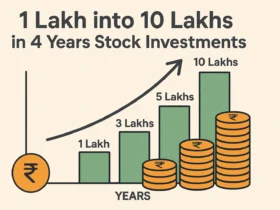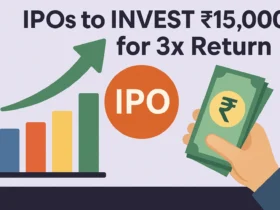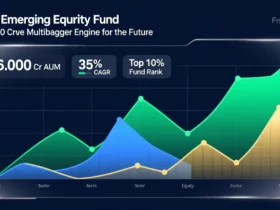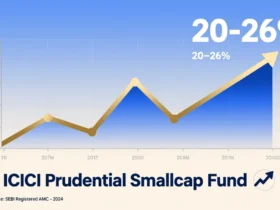Imagine skipping your daily chai or coffee for just one day and using that money to kickstart a journey toward financial freedom. Sounds impossible? It’s not! With as little as ₹500, you can step into the exciting world of the share market and start building wealth, one small investment at a time. Whether you’re a student, a young professional, or someone curious about investing, this blog will show you how to make your money work for you—without needing a fortune to begin.
Table of Contents
Why Invest in the Share Market?
You might be wondering, “Why should I bother investing ₹500 when it’s such a small amount?” The answer lies in the incredible potential of the share market. Here’s why it’s worth your time:
- Beat Inflation: Inflation erodes the value of your money over time. If you keep ₹500 in your wallet, it’ll buy less in five years than it does today. Investing helps your money grow faster than inflation, preserving—and even increasing—your purchasing power.
- Wealth Creation: Historically, the share market has delivered higher returns than traditional options like savings accounts or fixed deposits. Over decades, small investments can snowball into substantial sums.
- Ownership Perks: When you invest in shares, you become a part-owner of a company. That’s not just financially rewarding—it’s exciting to think you have a stake in businesses you admire!
As the legendary investor Warren Buffett once said, “The stock market is a device for transferring money from the impatient to the patient.” With patience and consistency, even ₹500 can set you on the path to financial growth.
In India, where the stock market has grown steadily—think of the Sensex rising from 25,000 in 2014 to over 80,000 in 2024—small investments can tap into this upward trend. The key? Starting early and staying committed.
Understanding the Basics: What You Need to Know Before Investing
Before you jump in, let’s break down some share market essentials in simple terms:
- Stock: A stock is like owning a tiny piece of a company. If you buy a stock of Reliance Industries, you’re a co-owner alongside Mukesh Ambani (well, sort of!).
- Share: A share is a single unit of stock. If a company issues 1,000 shares and you buy 10, you own 1% of it.
- Dividend: Some companies share their profits with shareholders through dividends—a little bonus for owning their stock.
- Broker: A broker is your middleman who helps you buy and sell shares. Today, brokers are often apps or online platforms like Zerodha or Groww.
- Bull and Bear Markets: A bull market is when prices are rising (think optimism), and a bear market is when they’re falling (think caution). Both are normal parts of the market cycle.
Think of the share market like a giant marketplace where people trade pieces of companies. Your ₹500 is your ticket to join this game—but don’t worry, you don’t need to be a pro to play. With the right knowledge, anyone can start.

How to Start Investing with ₹500
Now, let’s get to the big question: How do you actually invest ₹500 in the share market? While ₹500 might not buy you a full share of a high-priced stock like MRF (which trades at over ₹1 lakh per share!), there are smart ways to make it work. Here are your options:
1. Fractional Shares
Some modern platforms let you buy a fraction of a stock. For example, if a stock costs ₹1,000 and you have ₹500, you can buy 0.5 shares. This is less common in India but is gaining traction on apps like Groww or international platforms accessible to Indian users.
2. Mutual Funds
Mutual funds pool money from many investors to buy a diversified basket of stocks. The best part? Many mutual funds in India allow you to start with as little as ₹500 through a Systematic Investment Plan (SIP). It’s like joining a group investment club!
3. Exchange-Traded Funds (ETFs)
ETFs are similar to mutual funds but trade like stocks on the exchange. They often track a market index (like the Nifty 50) and have low costs. Some ETFs have affordable entry points, making them a great fit for small investors.
Why These Options Work
With ₹500, you’re not limited to one company’s fate. Mutual funds and ETFs spread your money across dozens—or even hundreds—of stocks, reducing risk and giving you a taste of the broader market.
Choosing the Right Platform
To invest your ₹500, you’ll need a platform that’s beginner-friendly, affordable, and trustworthy. Here’s a quick comparison of popular options in India:
| Platform | Minimum Investment | Key Features |
|---|---|---|
| Groww | ₹100 | Simple interface, educational tools |
| Zerodha | ₹0 (account opening) | Low fees, advanced charting |
| Paytm Money | ₹100 | Seamless Paytm integration, easy SIPs |
What to Look For
- Low Fees: High brokerage fees can eat into your ₹500. Choose platforms with zero or minimal charges.
- User Experience: A clean, intuitive app saves time and frustration.
- Educational Resources: Platforms like Groww offer guides and videos—perfect for newbies.
Pro Tip: Open a Demat account (to hold your shares) and a trading account (to buy/sell) through your chosen platform. Many apps bundle these together and make the process paperless.
Building a Portfolio with ₹500
So, you’ve got your platform and ₹500 ready. How do you build a portfolio? The trick is diversification—spreading your money to minimize risk. Here’s how:
- Start with a Mutual Fund SIP: Pick a diversified equity fund (one that invests in stocks). For example, an Nifty 50 Index Fund mirrors India’s top 50 companies—think Reliance, HDFC, and Infosys—all in one investment.
- Add Consistency: Invest ₹500 every month. Over time, this builds a habit and leverages rupee cost averaging (buying more when prices are low, less when they’re high).
- Example: A fund like the UTI Nifty 50 Index Fund has a ₹500 minimum SIP. Your money gets spread across 50 major companies, giving you instant diversification.
Even with a small amount, you’re not betting on one horse—you’re backing the whole race!
Risk Management: Playing It Smart
The share market isn’t a guaranteed win—it’s more like a rollercoaster with ups and downs. But you can manage the ride with these tips:
- Diversify: As we’ve said, don’t put all your eggs in one basket. Mutual funds and ETFs do this for you.
- Think Long-Term: Markets dip and soar. Historically, they trend upward over decades, so don’t panic over short-term drops.
- Avoid Blind Bets: Research before you invest. Don’t follow random WhatsApp tips or social media hype.
Renowned Indian investor Rakesh Jhunjhunwala once said, “The market is always right. Respect it, learn from it, and never fight it.” Stay informed, and you’ll handle the ups and downs like a pro.

The Power of a Long-Term Strategy
Here’s where the magic happens: compounding. When your investment earns returns, those returns start earning returns too. Let’s break it down:
- Scenario: You invest ₹500 monthly in a mutual fund with an average annual return of 12% (a reasonable expectation for equity funds in India).
- After 10 Years: Your total investment of ₹60,000 grows to ~₹1.1 lakhs.
- After 20 Years: That same ₹1.2 lakhs invested becomes ~₹5 lakhs!
Compounding Table
| Years | Total Invested (₹) | Value at 12% (₹) |
|---|---|---|
| 5 | 30,000 | ~48,000 |
| 10 | 60,000 | ~1,12,000 |
| 20 | 1,20,000 | ~5,00,000 |
Start at 20, and by 40, your ₹500 monthly habit could fund a dream vacation, a car, or even a down payment on a house. Time is your biggest ally—don’t wait!
Common Mistakes to Avoid
New investors often trip over these pitfalls. Steer clear to protect your ₹500:
- Chasing Hot Tips: That “sure thing” stock your uncle swears by? It’s often too good to be true. Do your homework.
- Panic Selling: Markets drop sometimes. Selling in fear locks in losses—hold steady instead.
- Overtrading: Buying and selling too often racks up fees and stress. Invest and let it grow.
- Ignoring Fees: High expense ratios in mutual funds or brokerage charges can nibble away your returns.
Stay disciplined, and your small start will have a big finish.
Real-Life Inspiration: Small Beginnings, Big Wins
Take Priya, a 22-year-old college student. In 2020, she started a ₹500 monthly SIP in a small-cap mutual fund using Groww. By 2024, her ₹24,000 investment grew to ₹35,000—a 45% return! She didn’t strike it rich overnight, but she learned the ropes and built confidence. Today, she’s upping her SIP to ₹1,000, aiming for bigger goals like funding her master’s degree.
Small steps, big dreams—that’s the share market’s promise.
FAQs: Your Burning Questions Answered
Q: Can I really start investing with ₹500?
A: Absolutely! Platforms like Groww and Paytm Money, plus mutual funds with ₹500 SIPs, make it possible.
Q: Which is better—stocks, mutual funds, or ETFs?
A: For ₹500, mutual funds or ETFs are ideal. They diversify your money, unlike individual stocks, which require more capital.
Q: How do I pick a mutual fund?
A: Check its past performance (3-5 years), expense ratio (lower is better), and whether it matches your goal (e.g., growth or stability).
Q: Is the share market too risky for beginners?
A: It has risks, but starting small, diversifying, and investing long-term keeps them in check.
Q: How long should I invest for?
A: Aim for at least 5-10 years to see meaningful growth. The longer, the better!
Take the First Step Today
Investing ₹500 in the share market might feel like planting a tiny seed. But with patience, care, and the right strategy, that seed can grow into a mighty tree. You don’t need to be rich to start—you just need to start to become rich.
Download an app like Groww or Zerodha, open your account, and kick off your first ₹500 investment. Whether it’s a mutual fund SIP or an ETF, you’re taking control of your financial future. Want more tips? Subscribe to our newsletter or follow this blog for the latest insights.
As Rakesh Jhunjhunwala wisely noted, “Growth is a reward for patience and perseverance.” So, what are you waiting for? Your journey to wealth starts now—one ₹500 at a time!































1 Comment